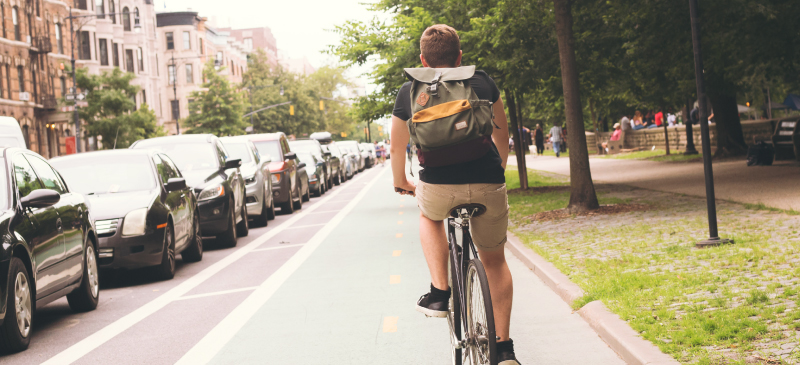Living in the city has its perks – convenience, entertainment, and endless opportunities. But amid concrete structures and busy streets, it’s easy to feel disconnected from the natural world. The good news? You don’t need to move to the countryside to experience the joy of nature.
Finding natural spaces in urban environments can significantly boost your happiness and well-being. Let’s explore how you can see patches of green serenity in your city life.
Why Urban Nature Matters for Your Happiness
Research consistently shows that connecting with nature improves mental health, even in small doses. When we spend time in green spaces, our stress levels drop, mood improves, and we feel more balanced. These benefits are significant for city dwellers who face daily sensory overload.
Nature provides a necessary contrast to the digital world we inhabit. Unplugging and reconnect with natural elements refreshes the mind, body, and soul. As naturalist John Muir wisely noted, “In every walk with nature, one receives far more than he seeks”.
The Science Behind Nature and Joy
Studies have proven that urban nature helps reduce anxiety, boosts immunity, and enhances productivity. Even brief interactions with trees, plants, and wildlife can trigger a positive physiological response that counteracts the stresses of city living.
Finding Natural Spaces in Your City
Nature exists around us, even in the most developed urban areas—you just need to know where to look. Here are some places to start:
City Parks and Green Spaces
Almost every city has dedicated green areas where you can escape the noise. From sprawling central parks to small neighborhood squares, these spaces provide relief from concrete surroundings. Make it a point to visit different parks throughout your city—each has its character and offerings.
Botanical Gardens and Conservatories
Botanical gardens showcase diverse plant life in carefully designed settings. These educational and therapeutic spaces allow you to learn about various plant species while enjoying a peaceful atmosphere. Many cities maintain stunning botanical gardens that transport you to different ecosystems without leaving town.
Community Gardens
These shared growing spaces offer opportunities to get dirty while connecting with neighbors. Community gardens boost local food production, foster social interactions, and provide a hands-on way to experience nature’s cycles.
Urban Waterways
Rivers, lakes, ponds, and coastal areas in cities offer unique natural experiences. Walking alongside water features can lower blood pressure and create feelings of calm. Look for riverside paths, lake shores, or harbor fronts in your city.
Creating Your Green Sanctuary
Don’t wait for nature to come to you—bring it into your daily environment with these approaches:
Start an Urban Garden
Even with limited space, you can create your green oasis:
* **Balcony Gardens**: Transform your balcony into a mini-garden with container plants, hanging baskets, and vertical growing systems.
* **Indoor Plant Collections**: Houseplants purify air and bring natural elements indoors—perfect for apartments without outdoor space.
* **Windowsill Herbs**: Grow herbs on sunny windowsills for culinary use and the joy of tending living things.
Choose the Right Plants
Select plants that match your conditions.
* Native plants require less maintenance and support local wildlife
* Assess your light conditions—some plants thrive in shade, others need full sun
* Consider drought-tolerant varieties if water conservation is important
Create a Living Corner
Dedicate a section of your home to nature with plants, natural materials, and perhaps a small fountain for the sound of water. This becomes your daily retreat when you can’t get outside.
Daily Habits to Connect with Urban Nature
Integration is key—weave nature into your everyday routine rather than making it a special occasion:
Morning and Evening Nature Rituals
Start or end your day with brief nature interactions:
* Enjoy morning coffee on a plant-filled balcony
* Take evening walks through neighborhood green spaces
* Watch sunrise or sunset from a city park bench
Lunch Break Nature Doses
Use work breaks to find nearby nature:
* Eat lunch in a pocket park
* Walk through tree-lined streets
* Sit by ornamental fountains or water features
Nature Commuting
Where possible, route your commute through greener areas:
* Choose paths through parks rather than busy streets
* Bike along tree-lined corridors
* Notice seasonal changes along your regular routes
Slowing Down to Notice Urban Wildlife
The city is home to more creatures than you might think. Taking time to observe this wildlife creates moments of wonder and connection:
Bird Watching in the City
Urban areas attract diverse bird species. Bring binoculars to parks or keep a list of birds you spot from your window. Notice migration patterns and seasonal visitors.
Insect Observation
Bees, butterflies, and other pollinators create tiny ecosystems throughout the city. Watching them work can be meditative and educational.
Animal Encounters
From squirrels to foxes, many animals adapt to city life. Early mornings offer the best chance to spot urban wildlife doing business.
Mindfulness in Urban Green Spaces
Nature provides perfect settings for mindfulness practice:
Sensory Awareness Exercises
When in natural spaces, intentionally engage all senses:
* Listen for bird calls above traffic noise
* Feel different leaf textures
* Smell flowers and freshly cut grass
* Watch light patterns through tree canopies
Forest Bathing in City Parks
Adapt the Japanese practice of shinrin-yoku (forest bathing) to urban settings. Spend time simply being present among trees, without objectives or distractions.
Joining Nature Communities
Connecting with like-minded people amplifies the benefits of urban nature:
Local Environmental Organizations
Volunteer with groups that maintain urban natural areas. You’ll meet people while contributing to green space preservation.
Community Garden Participation
Join an existing community garden or help start one. These spaces offer both social connections and regular nature interaction.
Nature-Based Classes and Events
Look for outdoor yoga, sketching groups, photography walks, or guided nature tours in your city parks.
Urban Gardening Basics for Beginners
If you’re new to growing plants in the city, start with these fundamentals:
Container Selection
Choose containers appropriate for your space:
* Ensure proper drainage
* Match pot size to plant needs
* Consider weight limitations for balconies
* Use vertical planters to maximize space
Soil Health Essentials
Urban growing requires attention to soil quality:
* Use organic potting mixes for containers
* Start composting kitchen scraps if possible
* Learn about soil amendments for container gardens
Water Conservation Methods
City gardening can be water-efficient:
* Install simple drip irrigation systems
* Collect rainwater where possible
* Group plants with similar water needs together
Finding Joy in Seasonal Changes
Cities display nature’s cycles in subtle but meaningful ways:
Spring Green Watching
Track the first tree buds and flowers in your neighborhood. Notice how green appears first in protected city microclimates.
Summer Shade Seeking
Map the best-shaded spots in your local parks. Notice how tree canopies create cooling effects in the summer heat.
Fall Color Hunting
Create personal “foliage tours” through city parks and arboretums when autumn brings color changes.
Winter Pattern Observation
Appreciate the architectural beauty of bare trees and the way snow transforms urban landscapes.
Final Thoughts: Building Your Nature Connection
Finding happiness in the city isn’t about grand wilderness experiences but a consistent, mindful connection with whatever natural elements you can access. Whether it’s tending windowsill herbs, visiting the same park bench regularly, or joining community greening efforts, these small actions accumulate into significant well-being benefits.
Remember that urban nature connection is highly personal. Experiment with different approaches until you find what resonates with you. The path to happiness through urban nature is available to everyone—it just requires opening your eyes to the green world that exists alongside the concrete one.









